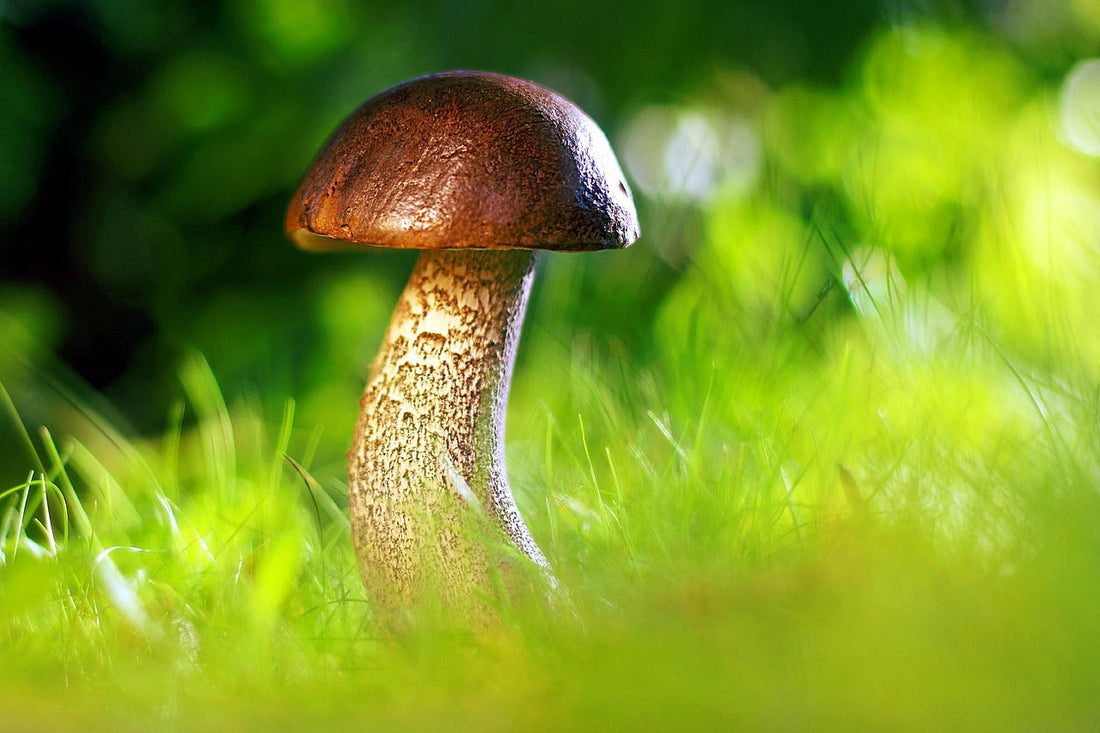
Mushroom Leather: A Low-Key Fabric Superhero
Share
I’ll be honest: when I first heard “mushroom leather” I cheerfully imagined a brave hunter, carefully stalking through the woods to wrestle and slay a giant mushroom. Sadly (or happily?) that’s not how it works. The truth, however, is far more sciency, far cooler, far less violent, and genuinely promising for the future of fashion.
So… what is it really?
Mushroom leather is made from mycelium - the branching “root” network of fungi. Technically they’re not roots, they’re more like the whole tree and the mushroom is the fruit, but let’s not get started spontaneously throwing pedant parties.
Anyway, those tiny threads, called hyphae (from the Greek for “web”), form dense mats underground. In nature, they’re the life-support system that grows mushrooms and, thanks to its ability to connect other organisms, has been referred to as a ‘wood wide web’ - allowing for exchanges of information and nutrients between species of plant life. In a lab, they’re the raw material for a leather-like textile.
How do you turn fungus into fabric?
There are a bunch of patents and trade secrets floating around, but the general recipe goes like this:
Grow a thick slab of mycelium → press it into a sheet → treat it with bonding and finishing agents (think natural waxes or plant-based resins) → colour/texture as needed.
This actually bears a fair amount in common with one of the more successful early faux-leathers (the 19th Century German Presstoff, for example) which were made by layering treated paper pulp and became popular during shortages during the Second World War.
The result of this process, however, is a material that looks and feels far more like leather, but which started life in a grow room, not on an animal.
Why does it matter?
Real leather is pretty bad for the planet (and, you know, involves actual hides, which - as a whiny, woke, vegetarian type, I can’t agree with). Plastic “pleather” solves one problem but creates others - including microplastics, higher carbon footprints, landfill etc. Mycelium leather sits in a sweet spot: there’s a renewable raw material, a massively lower CO₂ output, and there are no cows harmed.
The tech is still evolving, and there’s been no big push to scale the process yet, making it more expensive as a fabric than less humane options, but each production run gets more efficient and more durable - and MycoWorks’ opened a commercial facility back in 2023. With the market for leather goods expected to soon hit $700Bn globally, this stuff has the potential to make big money replacing an objectively cruel process.
Also, can we just spend a moment on how much less weird it is to wear mushrooms than parading around in animal skin? Leatherface in a mycelium mask is objectively less scary - he probably uses that chainsaw to make sculptures of woodland creatures from storm felled trees.
Can I buy it yet?
Sort of! Huge companies like Adidas, Lululemon and Stella McCartney have already shown prototypes and limited-run products using Mylo (Bolt Threads) and MycoWorks’ materials. The mass-market rollout is happening now, albeit slowly. If you Google “mushroom leather” you no longer see cowhide dyed mushroom-brown as you did even five years ago and, while genuine mycelium leather pieces remain few and far between - and tend to be limited to high-end, high-price goods, things are moving in the right direction!
Are we planning to use mushroom leather?
Oh my god, can you imagine? We’ve already spoken about this (and a million other mushroomy things we’d love to do). It’s on the roadmap - or what passes as a roadmap for the two of us, which, to be honest, isn’t even at ‘napkin math’ levels of planning, but we’d love to do it and as soon as it becomes an even vaguely viable option for us, we’re on it.
